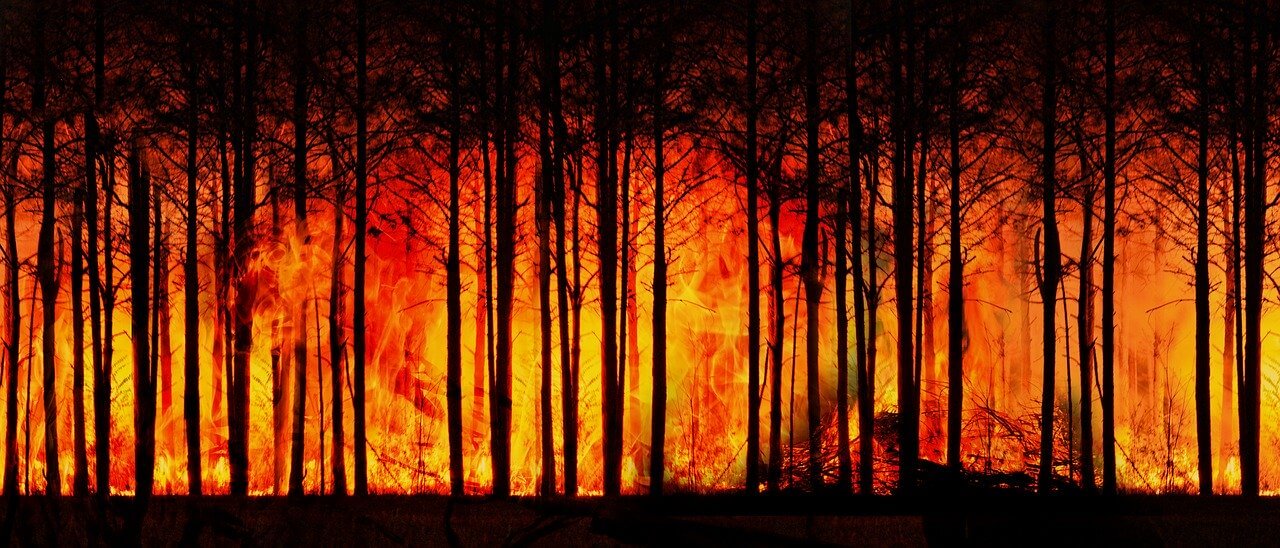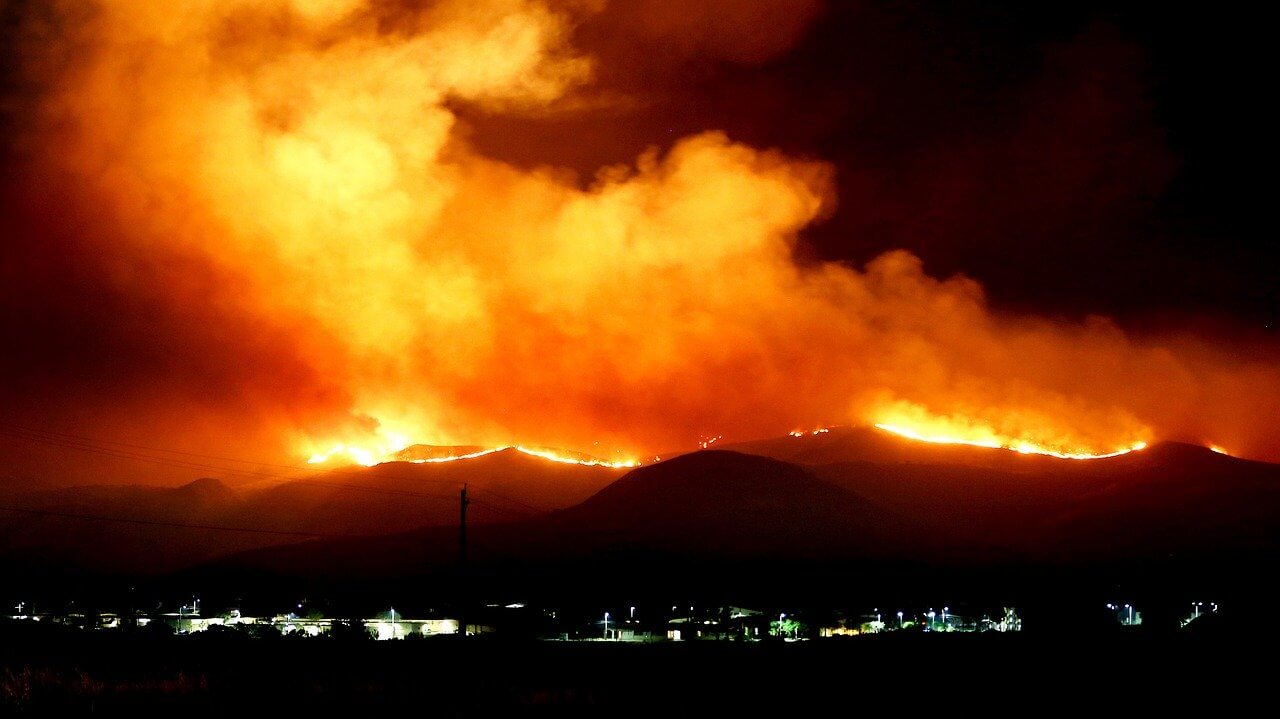Giant fires became the number 1 topic in the media last year. The entirety of Australia was burning. But the risk of forest fires rises everywhere. The reason? Unsurprisingly enough – global warming.
The forest fire problem in Europe and worldwide
The fires started after many months of extreme drought and heat in Australia. It might seem like a common occurence – Australia experiences fires every year. But in 2018 and 2019 they reached an extreme.
An astounding 8 hectares of forest was consumed by the flames. Twenty five people and millions of animals died. Whole regions were cut off from electricity and smoke clouds covered half of the continent. But Australia wasn’t the only place that was on fire. In 2019 an internet platform Global Forest Watch Fires (GFW Fires) noted over 4,5 million fires worldwide. That’s 400,000 more than in 2018.
In northern Canada 800,000 hectares of forest burned in hundreds of fires. According to the estimations provided by the government of Russia 9 million hectares of forests burned in Siberia – an area bigger than the whole Portugal. The toxic fumes fell on towns and cities.
As the climate gets hotter, the rainfall levels change, wet areas get even wetter, while the dry places get drier. Higher temperatures in spring and summer, as well as earlier spring melts usually cause the earth to be more dry, which makes summer drought and fires more plausible.
These warm and dry conditions can also make the fires longer and more intense, as they can be started by a lightning strike or a human mistake. The cost of the forest fires, when it comes to human health and safety, as well as physical damage and the tax money used to repair the damage caused by them is crushing and will probably keep rising, unless we improve our fire prevention method and restrict the actions leading to the further climate change.

The cause of fires?
The reasons behind conflagration are often complex. But experts point to a correlation between growing risk of fires and warmer ocean water, caused by global warming.
Artificial greenhouse gases raised the average temperature on Earth by 1 whole degree Celsius since the XIX century. The sea surface temperature also grew by 0,8 degree Celsius. And the warmer the ocean is, the less energy and CO2 it is able to absorb from the atmosphere. It’s important to note that the water reservoirs warm the earth during winter and cool it in summer – which is why the seaside has a milder climate compared to the middle of the continent.
The consequences of rising ocean temperature can be catastrophic. If the water keeps getting warmer, it can seriously affect the climate, causing anything ranging from extreme temperatures, storms and droughts, to floods and late rainy seasons, which can disturb entire ecosystems. When strong winds blow through hot and dry terrains, like Australia, the risk of a fire rises greatly. But the risk also rises in places that were once cool and mild.
Aside from big fires in Australia and Europe, in 2019 they also occurred on the Arctic – which was absolutely unprecedented. Alaska experienced record-breaking temperatures, reaching up to 32 degrees Celsius, creating a perfect opportunity for wildfires. According to experts, we can expect forests in the northern hemisphere to burn like never before in the last 10 000 years.
Natural selection or human meddling?
Fires are a part of a natural process of ecosystem regeneration and growth. But currently 96% of wildfires are caused by humans though intentional lighting or an accident. Only 4% of fires start naturally, like by a lightning strike.
Many areas are cleared by the cut and burn method to make space for farms, animals or industry reasons, especially in the Amazon region. 27 million hectares of forests were also destroyed in Indonesia since 1990 because of palm oil and paper industries.
The data from Global Forest Watch Fires also show that many forest fires occur in Africa, from South Sudan to Western Africa. Experts say that rising population density lead to increased usage of natural resources, which means that various ecosystems have less and less time to regenerate. The fires are also becoming more frequent.
The situation in Amazon isn’t looking too good either. Between the January and November of 2019 80% more forests have been destroyed than the previous year. Thirty years ago the Amazon was still so wet that wildfires of this magnitude would not be possible. And yet it becomes increasingly drier because of human actions.

Who gains from the fires?
To put it simply, private contractors hired to deal with the fires. Aside from them – farmers (although only apparently) and the government cutting down the forests to sell them.
Most of the physical operations connected with fires are more often the domain of private businesses. And since the global warming causes higher temperatures and lower humidity, causing seasonal fires to spiral out of control, profit-oriented companies take on increasingly bigger roles, while underfunded government facilities become more and more reserved in their actions. The private sector provides over 40% of firefighting services in the USA, which translates to the Forest Services spending 757 mln USD on over a 1000 contracts. Private contractors became big players over the last two decades when it comes to most aspects of managing the fires.
Natural cycles, human action, like changing the way the earth is used, and climate change caused by humans can affect the probability of a wildfire, which in turn draws people to the firefighting business. But it’s not too late to act. What we do now can determine the frequency and severity of these fires.
By engaging in actions connected fire prevention – creating buffer zones between human settlements and the forests and by fulfilling the requirements of fire safety at home and in the city – we can help to decrease the risk, and by decreasing our influence over the climate we can help to save our forests, our houses and our health.
